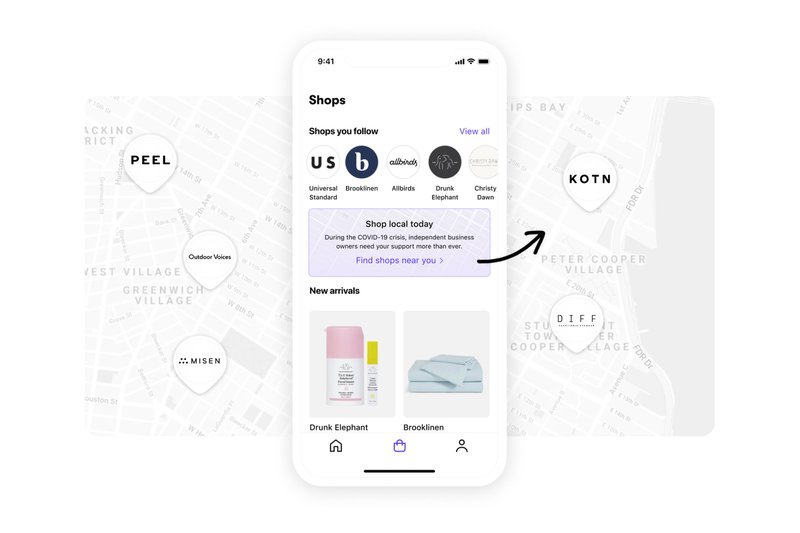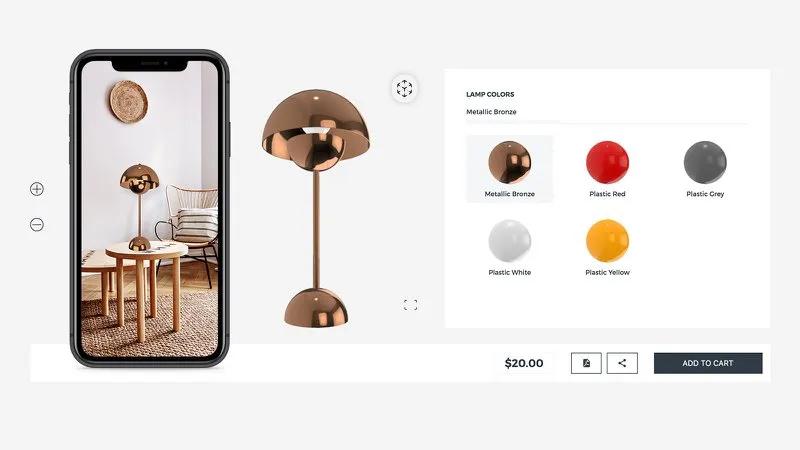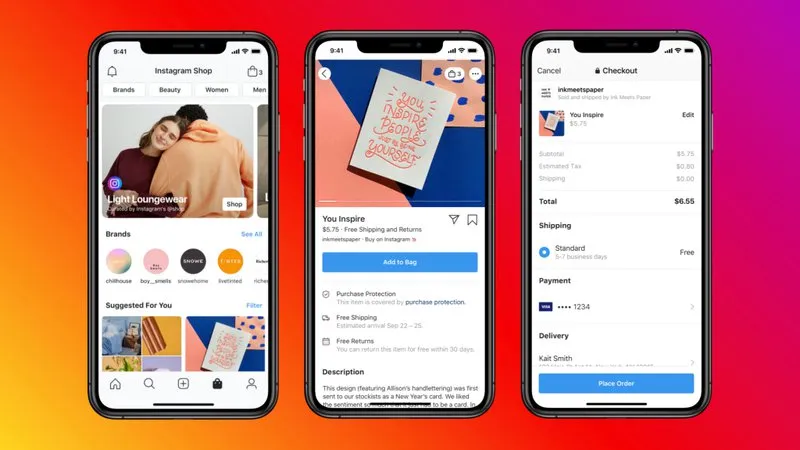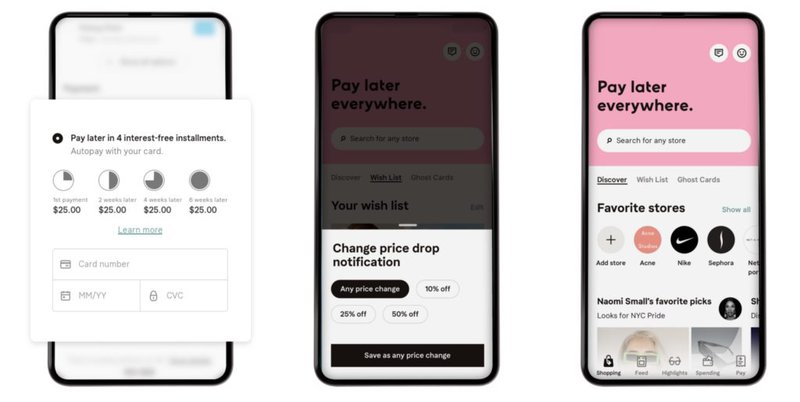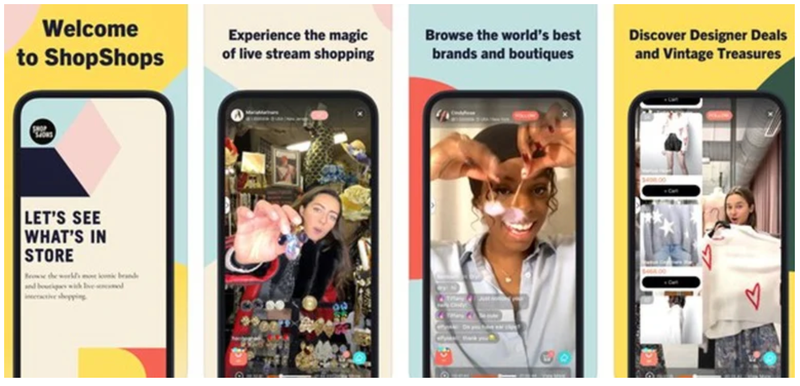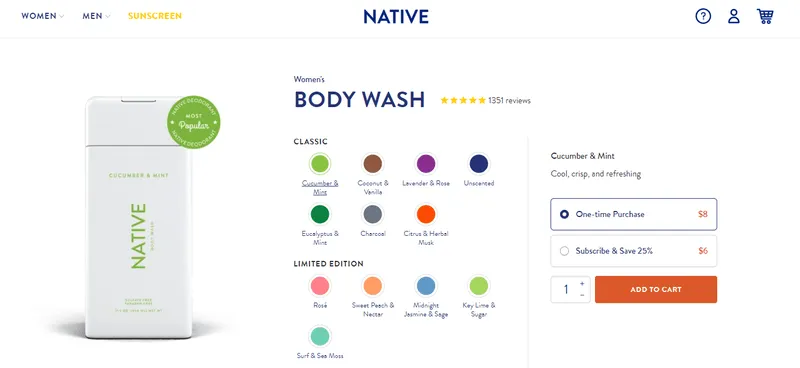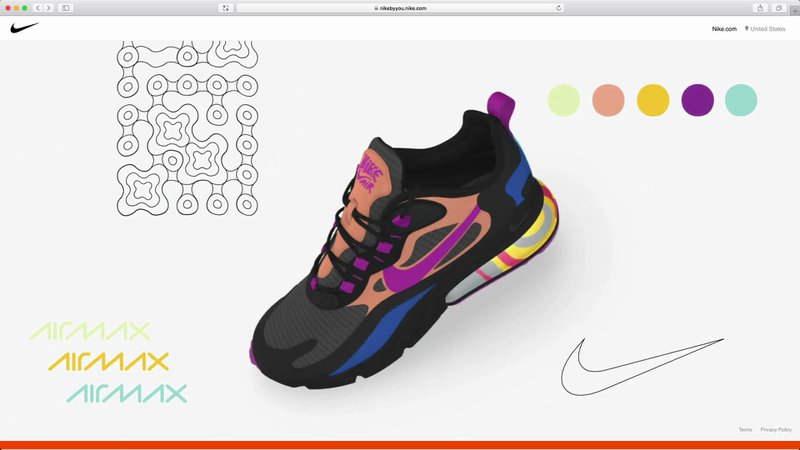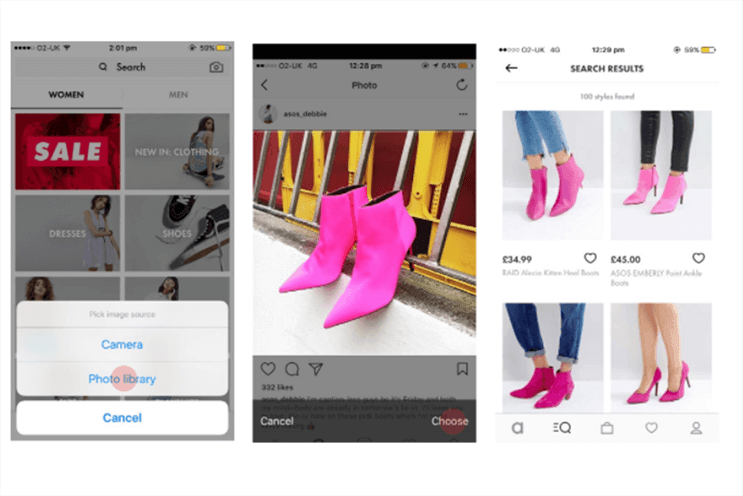16 Top eCommerce Trends to Watch in 2026 [VR + AI + Omnichannel Marketplaces]
Learn about the top eCommerce trends to watch - AR/VR, marketplaces, omnichannel, subscriptions, live streaming, influencer and UGC trends, and much more.
Published November 5, 2024
![16 Top eCommerce Trends to Watch in {year} [VR + AI + Omnichannel Marketplaces] main image](https://entail.mayple.com/en-assets/mayple/60ddc2f932445eac2fb4c0b8_jezaelmelgozalayMbSJ3YOEunsplash3925x2208_90fe4a0a6204b996bc04c8f364d41fa5_2000-1699777198386.jpg)
The eCommerce industry is changing rapidly. Online retail sales increased by 32% in Q1 of 2021 because of the pandemic and eCommerce experts predict that the industry has grown more in the last 18 months than in the last 10 years.
New marketplaces, marketing channels, and native apps are coming out that are reinventing the buyer's journey. And if brands don't stay on the cutting edge they will leave a lot of money on the table or worse, become obsolete.
In this guide, we break down the most important eCommerce trends to execute for your eCommerce store.
Let's dive in.
Why Are Ecommerce Trends so Important?
Each new marketing channel that launches quickly becomes the cheapest way for brands to reach audiences organically and through advertising. Slowly as more brands and advertisers jump on a new trend it becomes more expensive and other marketing channels open up.
Every eCommerce store needs to learn from past trends in the history of eCommerce and find a balance between optimizing existing channels and experimenting with new ones.
For example, Facebook ads were really cheap just a few years ago, and over the last 2-3 years they have become much more expensive, especially for brands with a small average order value (AOV).
On the other hand, TikTok advertising is still pricy at around $20k per campaign, and with time it will become cheaper and more brands will take advantage of it.
Over time, new platforms are able to create a new approach to improve the customer journey or create new touchpoints along that journey. That opens a new opportunity for brands to create content, advertise, and attract new audiences.
As new media emerges, and consumer shopping habits change, the brands that innovate win. The ones that fail to innovate quickly become obsolete.
Top eCommerce Trends for 2024
1. Voice search helps make online shopping more convenient
Google dominated digital marketing at the beginning of the 2000s because it was the primary way to search for products. Now that we have hundreds of apps and eCommerce marketplaces the way in which we search is changing.
Over 50% of eCommerce traffic comes from mobile devices and the most convenient way to shop on mobile is through voice search. This trend is spreading like wildfire.
51% of all online shoppers in the US use voice assistance to help them find the right products. Just like all forms of media, ads are a huge part of voice search. 38% of consumers find voice ads less intrusive and more engaging than video ads.
2. AI helps shops get data and automate marketing
Artificial intelligence (AI) and machine learning make it possible for eCommerce stores to personalize and automate a lot of the customer experience. AI continuously collects information about the use, how they shop, what items they browse, which pages they go on, which emails they open.
Ecommerce brands can use a customer data platform (CDP) like Zaius to store all that information and use it in their email marketing campaigns (read more on e-commerce email marketing agencies). There are CRO tools that use AI like ConvertCart that stores data on each user and displays dynamic content in an effort to maximize conversions.
Brands can also use ChatGPT for advertising - to write better copy, create better creatives, and optimize campaigns strategy.
3. Marketplace innovate and take on omnichannel
Marketplaces have completely transformed the eCommerce industry. Initially, places like Amazon and eBay launched and provided a purely digital experience to shoppers. Now, marketplaces are bridging the gap between physical and digital.
An example of this is Shopify's Shop app which is a native platform app that helps online customers find local shops that run on Shopify. Merchants can sell products directly to the consumers via in-store or curbside pickup.
Shopify is already the biggest eCommerce platform and it’s bridging the gap between physical retail sales and eCommerce in a brilliant way.
Another advantage of marketplaces is that they offer marketing services. For example, Etsy and Bonanza run advertising campaigns for store owners.
Shopify has hundreds of native plugins that integrate with many marketplaces to make the whole process of selling on them virtually seamless. They also have a network of Shopify marketers available to help you grow your store.
4. Shopping goes virtual (AR/VR)
One of the major challenges of buying products online is that you can't try them on. Augmented reality makes it possible for consumers to see what they are shopping for, to virtually try it on. AR is especially popular for fashion, beauty, and home decor brands. Consumers want to see what furniture looks like in their space before they make the purchase.
In 2020, 600 million consumers used AR on their mobile devices (Statista), and that number is projected to hit $1 billion by 2022. The total ad spend from AR social lenses is set to reach $2.4 billion by 2022 (ARInsider).
If an online store wants to display their products in 3D they can install a simple Shopify app like Zakeke. Or they can use a design agency that will create the images for them.
5. On-site personalization creates individualized experiences.
Ecommerce sites that provide a personalized shopping experience see a 25% revenue lift. One of the biggest factors that help a shopper convert is trust. Personalization builds that trust by displaying products that the user has previously looked at, clicked on, and interacted with, as well as their purchase history. It also includes dynamic content that changes based on the user's data.
ConvertCart, for example, gathers all the possible omnichannel data on a user and then displays elements and products that the user will most likely interact with based on the data. Ecommerce stores can also display countdown timers, popups based on the location or source of the visitor, and social proof notifications.
6. Big data opens new capabilities
Big data unlocks a lot of new capabilities for eCommerce stores. It combines the data taken from eCommerce platforms, social media, and brick-and-mortar sales to create optimized omnichannel experiences for shoppers.
Brands are using big data for pricing optimization across all marketing channels including - marketplaces like Amazon, demand forecasting, and product research. Big data is used to accurately record the entire customer journey, build accurate customer profiles and personalize customer communication and marketing on the site and third-party marketplaces.
7. Native social commerce is on the rise
Social media platforms have shifted from places of entertainment to social commerce recommendation engines where influencers of all stripes promote eCommerce products to their audiences. 60% of Instagram users say they use the platform to find new products. 84% of shoppers review at least one social media site before purchasing.
Pro tip: need more help growing your eCommerce shop on social media platforms? Hire one of our eCommerce freelancers today!
8. Buy now, pay later
Buying on credit and splitting purchases into payments have become the norm in the eCommerce world. Companies like Klarna and Afterpay offer consumers the "buy now, pay later" model which dramatically decreases friction and increases conversion rates. They also connect brands to shoppers through special offers and promotions.
9. Livestreaming is the new video
Video marketing has taken on new forms. Platforms like Vine and TikTok have popularized short video clips. Most marketplaces include videos on their listings. Then shippable videos came out on Instagram, along with reels and IGTV.
The newest trend in video marketing is live streaming. Platforms like ShopShops, Whatnot, and Talkshoplive are connecting brands with influencers through live videos. It provides a much more interactive experience for users and has huge potential for influencer marketing.
The founder and global CEO of ShopShops, Liyia WuSince, said: “Since founding ShopShops, the vision has been to allow customers all over the world to shop global, like a local, from the palm of their hand”.
10. Influencers and UGC boost advertising
Ecommerce businesses used to have to hire models and conduct expensive photoshoots to get creatives for their ads. There's a much easier way - using influencers and actual users to generate content.
Influencers have significant networks on social media and have a much bigger impact than regular branded content. In our research of more than 250+ ad creatives, we've found that a significant amount of them use influencers.
Another way to create more engaging ad creatives is by using UGC, which is user-generated content in the form of images or videos made by the consumers themselves. Millennials trust UGC 50% more than original content created by the brand. UGC ads have 4x higher click-through rates and a 50% drop in CPC compared to regular ads. Social campaigns also experience 50% more engagement when they use UGC.
11. Loyalty, referral programs, and in-store incentives
With the recent iOs 14 changes and the new privacy laws, it's going to be much harder for brands to retarget their visitors online. And without retargeting brands have to look elsewhere to build those customer relationships.
That's why eCommerce companies are investing more in delighting their existing customers through loyalty and referral programs. This helps increase repeat purchases, increase the customer lifetime value (CLV) and increase sales without having to rely on 3rd party data.
12. Cross-channel marketing will be key to the success of brands
1st party data allows eCommerce brands to retarget their users across multiple channels very efficiently. For example, brands that have a brick-and-mortar store can offer in-store incentives to get their online customers to purchase at a local location. Or they can send an online promotion to a customer based on their shopping behavior inside the physical store.
The key to a successful cross-channel campaign is correct attribution. It's important to see the whole picture and all the various touchpoints along the customer journey and not just look at the last-click attribution. The emphasis is put on optimizing the online shopping experience of the shopper by using multiple channels.
13. Subscription-based pricing and membership programs
Subscription products are the mecca of every entrepreneur. They translate into a steady, predictable revenue and hyper-growth. For the consumer, they can offer great convenience and savings. However, it’s difficult for a subscription-based eCommerce business to reach profitability as we’ve seen with brands like BirchBox.
That’s why brands are launching stand-alone subscription products, like the Gillette subscription starter kit, which helps improve retention and CLV. Native, the skincare brand, offers every product as a one-time purchase and as a subscription.
The other form of subscription-based pricing is a membership program. Which sometimes offers exclusive access to new product launches or discounts on existing products. These hybrid subscription models are a way for eCommerce brands to take advantage of the benefits while minimizing the risks involved.
14. Brand causes
Sustainability and green consumerism are on the rise. Studies show that 66% of global consumers would pay more for sustainable products. Up-cycling or selling used clothing is opening up new opportunities.
Brands like Timberland, Patagonia, Nike, and Lululemon all opened refurbishment and resale programs of their own. ThredUp estimates that the used apparel market will reach $77 billion in the next five years.
15. Customers can design their own products
Another future trend to follow is brands offering custom products to their customers. One great example of this is Nike by You where Nike lets their customers choose the colors and design of their show, creating a custom design.
16. Visual search
Another great feature that is quickly seizing the eCommerce world is the ability for a site user to search for a product by uploading an image of a similar product (like a reverse image search on Google).
Visual search also means that there are hundreds of tags and visual characteristics that the user can search for, which makes the entire customer experience so much easier.
How to decide on the right channel for your brand
Not every trend is going to be the right one for your store. They may all sound really good but if you try too many of them at once you might spread yourself too thin and waste a lot of time. Here’s a foolproof process to follow to pick the right trends and maximize your eCommerce sales:
1. Get really clear on your KPIs
Before you launch a new channel make sure that you know what your KPIs are.
- What is the ROAS of your ad campaigns?
- What is your average order value (AOV)?
- What percentage of your purchases are from returning customers?
- What is your conversion rate for each channel?
2. Research industry trends and competitors
Once you know what your KPIs are you can start researching each trend. Look at industry blogs and influencers. Start with your own industry and then broaden your research to fill the gaps.
You should also look at what your competitors are doing and what’s working in your specific industry. Survey your customers to get first-party data and ideas on which trends will positively impact the customer experience.
3. Determine the budget and scope of work
Look at each trend and see what infrastructure you already have to make it happen. Make sure you have the influencers, partnerships, and tech stack to execute the trend. Also, make sure that you have the team and the long-term commitment to see it through.
Recap
The future of eCommerce is bright. You should always focus your marketing efforts to meet customer expectations. Focus on improving the visitor’s online experience of your brand and increasing your customer loyalty.
Need a boost? Want to create the right strategy for your omnichannel expansion? Talk to one of our expert omnichannel marketers today!


